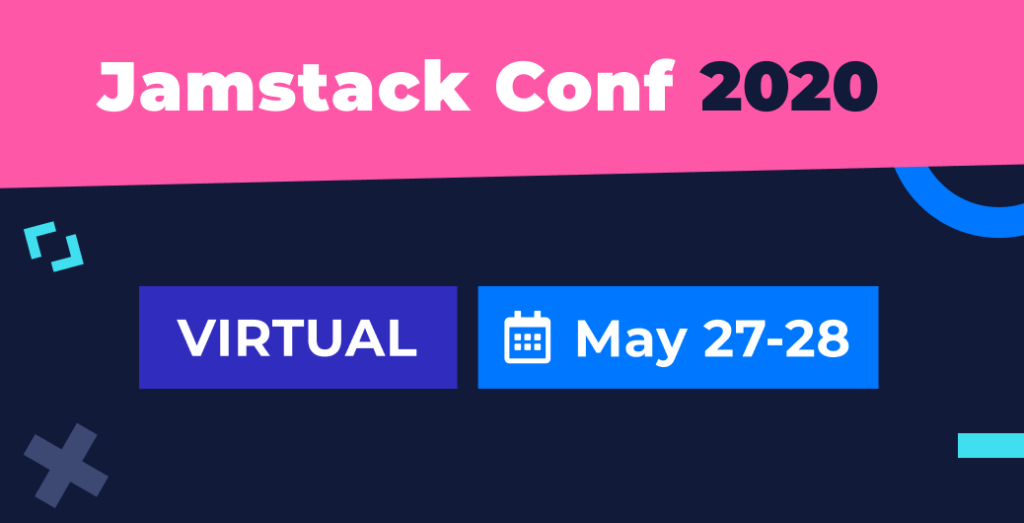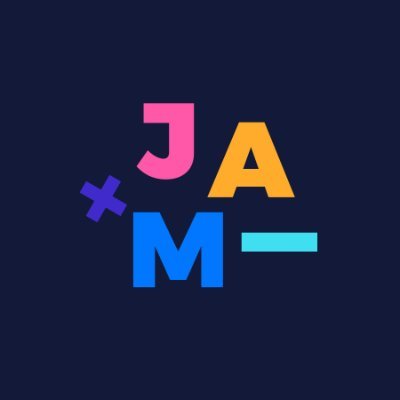Jamstack Conf is a two-day celebration of the next generation of web apps, where the JAMStack community and ecosystem come together to learn, connect, and create. Conference attendees range from frontend and full-stack engineers to web agencies, all ready to push the boundaries of tomorrow’s web architecture. This year for the first time, a first virtual version with talks and workshops was held on May 27th-28th, and I was there.
But first, what is the JAMStack?
In the JAMStack, JavaScript (JS) is responsible for giving the necessary dynamism to the web page. Of course, the JS runs 100% on the client. There is no restriction on the style of the code or the JS library/framework that can be used. All the data and business logic that the web requires must be accessed via APIs. A set of markdown templates define how this data will be displayed.
As you can see, the JAM architecture is very different from what we are used to seeing if we use a pure WordPress or Drupal type CMS, where each individual client request involves a query to the CMS database to retrieve the data to display and render them with the corresponding template. At JAM, the website is pre-generated.
What does this mean?
It has many advantages, such as greater speed, security, price, and user experience. The million-dollar question is, then, what do I do when the data that my website has to show changes?
No problem. At JAM, the web is not static but is pre-generated. You can regenerate the web as many times as you want so that the data is always updated.
Once regenerated, it behaves like a static web. Simplifying, the web follows a continuous deployment process just like you already do (or should do) with the code. Services like Netlify help you automate this process. Note that you can even continue using WordPress as a backend if you want, but seen as a headless CMS, which we will access during the rendering process of the web prior to its deployment

The Jamstack Conf
That said, the Jamstack Conf is the must-attend event for anyone building the next generation of web applications. The event was hosted by Netlify, and the Keynote was by Matt Biilman, who gave us a brief tour about the state of the JAMStack and why it is so important, especially in these times, because web access to information is a really big thing in this global pandemic and situation. The web has always been central to the idea of sharing and accessing information from all over the world, from all kinds of devices and places.
For example, Matt mentioned that for the outbreak of 2003, 23 articles and studies were published. For the emergence of the COVID-19, there are currently more than 10,000 articles on the virus and even more to come. This is a huge volume of information. It’s a truly global phenomenon with researchers all over the world talking to each other, communicating online, and sharing information with the public and researchers.
Matt talked to us about how the JAMStack has helped researchers and gave the example of a website that took advantage of this technology. The COVID Tracking Project was created to share data from all over the US, making it available to anyone with an interest. It’s based on a modern workflow around Github and Git, with people from all over the web industry contributing. It’s a project that reaches places like the White House or the New York Times, to public institutions. The COVID Tracking Project has been widely circulated and has had more than 35 million unique visitors. That blows my mind how much a server or servers could cost to handle 35 million unique visitors or days with more than a hundred million requests.
Matt also highlighted the great difference in internet speeds, citing as an example that the speed of bandwidth increased by 20.65% but also increased the speed difference of users by up to 125 times more, between places with the slowest speed and the fastest. Matt closed his presentation by mentioning that if you were a web developer back in the 90s, you actually had to think about physical servers. You had to think about power cords and stuff.
On the other hand, you would never have to deal with client-side optimizations, client-side builds, or responsive design. So, as the web has progressed and the demands of the experiences and the devices accessing sites have gone up, the idea behind JAMStack had to sort of build layers of abstraction that take some of this complexity away, making it possible for a developer to work without considering those lower layers of the stack. I’m thankful for it!
Then it was time for the State of the JAMStack. This year, they surveyed over 3,000 web developers, both Netlify users and not, both JAMStack fans and not, about how they are building sites in 2020. To see the results, visit State of the Jamstack.
Q&A, Expo & Networking
At Jamstack Conf, there was also time to meet attendees and sponsors. There were video rooms; I loved it! Thanks to that, I was able to see first-hand several interesting new products, such as imgIX. This image processing and optimization API transforms, optimizes, and caches your entire image library using simple URL parameters, various headless CMS, such as Strapi, Prismic, or those already known, such as Sanity and the Algolia search engine.
Fireside Chat
After the break, it was time for one of my favorite talks: Harper Reed, former Head of Commerce at Braintree, and Frances Berriman. In 2011, Harper served as Chief Technology Officer for Barack Obama’s 2012 re-election campaign. Together, he and Frances talked about various topics, such as the beginning of JavaScript, libraries, and the future of JAMStack.
Lightning Launch
Netlify’s David Calavera CTO introduced the new Netlify Edge Handlers. Then it was Renaud Bressand’s turn to show us how to use Prismic with Nuxt.js.
Tom Preston-Werner presented a demo of RedwoodJS. RedwoodJS is bringing full-stack to the JAMStack! Built on React, GraphQL, and Prisma, Redwood is an opinionated, full-stack, serverless web application framework that will allow you to build and deploy JAMStack applications with ease. Imagine a React frontend, statically delivered by CDN, that talks via GraphQL to your backend running on AWS Lambdas around the world, all deployable with just a Git push. After that interesting talk, Erin Kissane told us more about The COVID Tracking Project.
After that interesting talk, Erin Kissane told us more about The COVID Tracking Project.
Internet consumers in the emerging market are accessing your web products differently. Yes, there is fast growth, but the bar is still low. Christian Nwamba in his session walked us through the path of internet users in Sub-Saharan Africa and how JAMStack can help by providing a better experience.
Celebrating JAMStack
Overall, the conference had many helpful topics and showed the strength of the stack. For lovers of JAMStack, like me, it was a conference that fulfilled all my expectations. I wanted more, and I hope to be able to be present at the next Jamstack Conf, which will be October 6-7 in San Francisco.
If you want to relive the first Jamstack Conf Virtual, videos of talks are available on the official JAMStack channel.
Comments